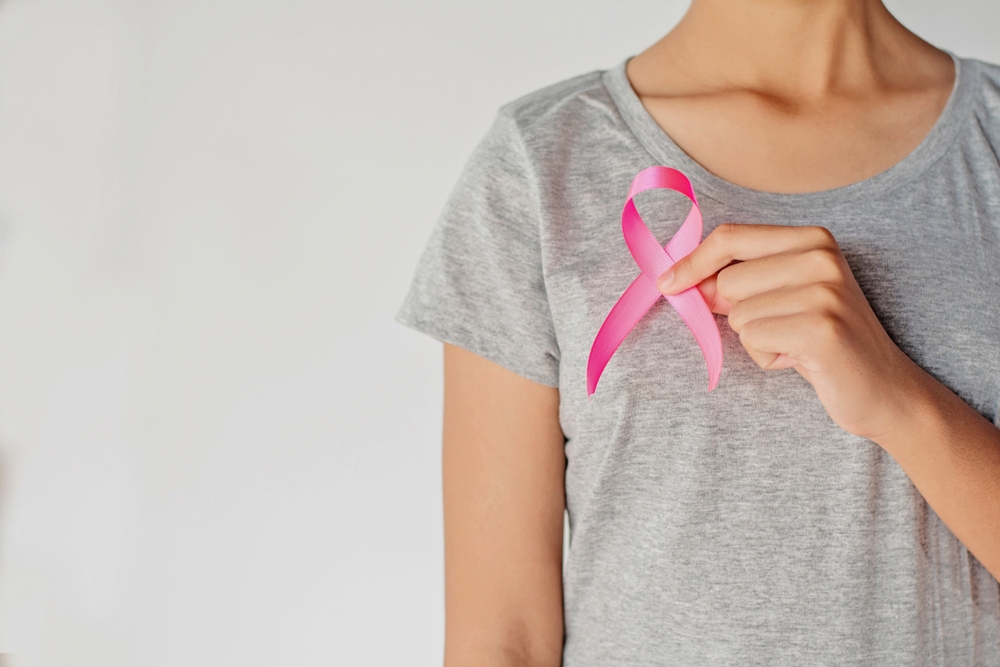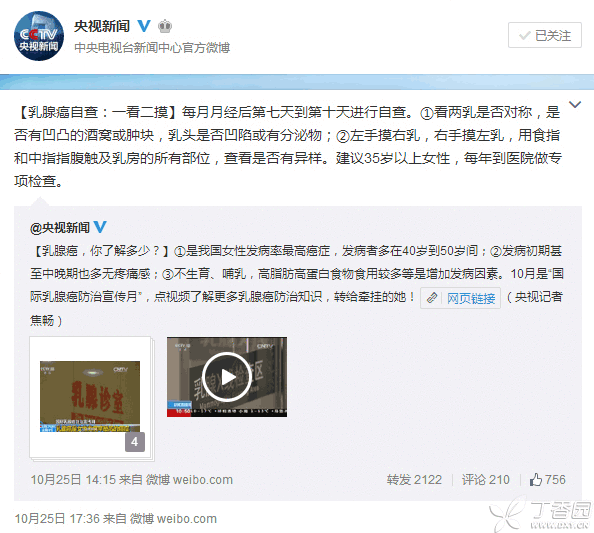
Breast cancer is currently the cancer with the highest incidence rate among Chinese women.
In 2008, 169,452 women in China were diagnosed with breast cancer. At the same time, 44,908 women died of breast cancer that year. Breast cancer has become a number one threat to the life and health of women in China.
More and more people begin to pay attention to the progress of diagnosis and treatment technology for breast cancer, and breast cancer screening aimed at [early detection of breast cancer] is the focus of public attention.
Female compatriots may often hear opinions about breast cancer screening from the mass media or even some doctors: they should often [touch]-breast self-examination; At the age of 35 or even 20, they will start to go to the hospital for special examinations to check breast cancer.
On October 25, 2015, CCTV News also put forward similar opinions on its official microblog and introduced in detail the methods and steps of [self-touching] (as shown in the figure below).

The continuous progress of modern medicine depends on the continuous enrichment and perfection of medical evidence, so the relevant guidelines for diagnosis and treatment have been continuously updated.
Regarding breast cancer screening, there are authoritative guidelines for reference in the world, mainly those of the American Cancer Society. Since the American Cancer Society put forward the “Breast Cancer Screening Guidelines” in 2003, it has made a revision in 2007, and on October 20, 2015, it has made another major update and revision [1].
The author wrote a popular science article on breast cancer screening in January 2015, mainly referring to the revised guidelines of the American Cancer Society in 2007. Now, the popular science article is a bit [outdated], so it is also necessary to introduce the [upgraded] new guidelines.
[Self-Touch] Can Breast Cancer Really Be Detected Early?
The answer is no.
In the old guidelines, although [self-touch], that is, breast self-examination, was also introduced, it was also stressed that breast self-examination is not a good method for early detection of breast cancer.
This new guide emphasizes this point again.
Breast self-examination does not help to reduce the mortality rate of breast cancer. On the contrary, it may bring unnecessary anxiety, tension and excessive medical treatment to women, and also bring unnecessary excessive examination to the medical treatment process, especially invasive breast lump puncture.
In fact, the most obvious change in the new guide is that it is no longer recommended.
[He Touches] here refers to [Clinical Breast Examination], that is, letting doctors touch and examine the breast.
The old guide suggested:
